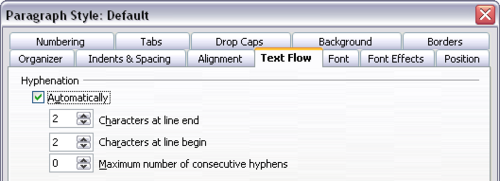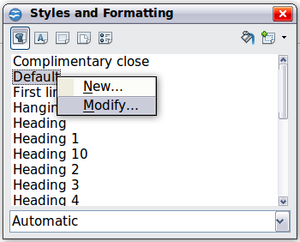What is Writer?
Warning: Display title "What is Writer?" overrides earlier display title "Hyphenating_Words". Template loop detected: Template:Documentation/GS4WriterTOC
What Is Writer?
Writer is the word processor component of Apache OpenOffice. In addition to the usual features of a word processor (spelling check, thesaurus, hyphenation, autocorrect, find and replace, automatic generation of tables of contents and indexes, mail merge and others), Writer provides these important features:
- Templates and styles (see Chapter 2)
- Page layout methods, including frames, columns, and tables
- Embedding or linking of graphics, spreadsheets, and other objects
- Built-in drawing tools
- Master documents to group a collection of documents into a single document
- Change tracking during revisions
- Database integration, including a bibliography database
- Export to PDF, including bookmarks (see Chapter 9)
- And many more
These features are covered in detail in the Writer Guide.
| Content on this page is licensed under the Creative Common Attribution 3.0 license (CC-BY). |
Hyphenating Words
You have several choices regarding hyphenation: let Writer do it automatically (using its hyphenation dictionaries), insert conditional hyphens manually where necessary, or don't hyphenate at all.
Automatic Hyphenation
To turn automatic hyphenation of words on or off:
- Press F11 ( ⌘ Cmd + T on Mac) to open the Styles and Formatting window or go to the Styles deck of the Sidebar.
- On the Paragraph Styles page (Figure 53), right-click on Default and select Modify.
- On the Paragraph Style dialog (Figure 54), go to the Text Flow page.
- Under Hyphenation, select or deselect the Automatically option. Click OK to save.

| Turning on hyphenation for the Default paragraph style affects all other paragraph styles that are based on Default. You can individually change other styles so that hyphenation is not active; for example, you might not want headings to be hyphenated. Any styles that are not based on Default are not impacted. See Chapter 2 (Styles and Templates) for more about styles based on other styles) |
You can also set hyphenation choices through Tools → Options → Language Settings → Writing Aids. In Options, near the bottom of the dialog, scroll down to find the hyphenation settings.

To change the minimum number of characters for hyphenation, the minimum number of characters before a line break, or the minimum number of characters after a line break, select the item, and then click the Edit button in the Options section.
Hyphenation options set on the Writing Aids dialog are effective only if hyphenation is turned on through paragraph styles.
Manual Hyphenation
To manually hyphenate words, do not use a normal hyphen, which will remain visible even if the word is no longer at the end of a line when you add or delete text or change margins or font size. Instead, use a conditional hyphen, which is visible only when required.
To insert a conditional hyphen inside a word, click where you want the hyphen to appear and press Ctrl + - . The word will be hyphenated at this position when it is at the end of the line, even if automatic hyphenation for this paragraph is switched off.
| Content on this page is licensed under the Creative Common Attribution 3.0 license (CC-BY). |
